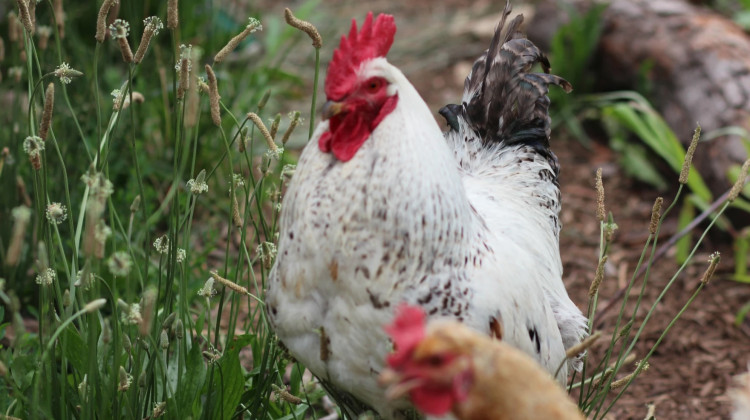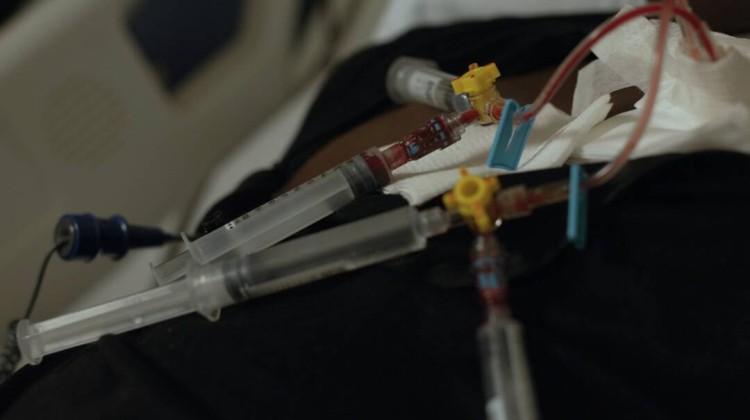
The Indiana Department of Homeland Security is asking for information about drones flying over farms quarantined for bird flu.
Farah Yousry / WFYIThere is an increased activity of drones flying near barns across Indiana where outbreaks of the Highly Pathogenic Avian Influenza (HPAI) H5N1 or bird flu have been identified, according to the Indiana Department of Homeland Security.
The Department put out a release asking for information about the drones, which have been reported in Adams, Allen, Jackson and Jay counties in Indiana and locations in Ohio, according to IDHS.
“Some reports have surfaced to indicate drones have landed on barns in these areas, and there is legitimate concern the drones could transmit disease from one location to the next,” IDHS’s press release said.
The virus is highly contagious and deadly for birds.
In 2024, Indiana reported just two farms infected with bird flu. But that number has grown to just under 10 farms in 2025, with more than 400,000 birds impacted and expected to be culled to limit the spread of the virus.
Denise Derrer-Spears, public information director for the Indiana State Board of Animal Health, said some of the drone reports have been verified, but it’s not clear how many drones may be flying over quarantined sites.
“The big question is why? We are uncertain of who is manning the drones, what the purpose of them is, and what's trying to be accomplished,” Derrer-Spears said.
A spokesperson for IDHS would not provide an interview but said, “any reasoning behind why people are flying the drones is being investigated at the local level.”
Officials are advising residents not to shoot at drones or chase after drone operators, instead they’re asking people to contact local law enforcement.
“There is great concern, because these poultry sites are quarantined because of a disease issue, and we're concerned that any traffic on and off of those facilities, whether it be foot traffic, vehicle traffic, or even drone traffic, could have the potential to spread the disease,” Derrer-Spears said.
Flight restrictions are being considered with both the Federal Bureau of Investigation and the Federal Aviation Administration working with the state to monitor the airspace above quarantined farms.
Biosecurity at poultry farms has been an increasing concern as cases of avian influenza rise, impacting farmers and worsening egg shortages.
Derrer-Spears said she worries the country is still in the early days of an outbreak.
“Unfortunately,” she said, “we could be at this for a while.”
Experts worry that if the virus isn’t contained there is an increased risk of it spilling over into humans, potentially causing a pandemic.
That’s been of particular concern after the virus showed up in dairy cows last year for the first time. Nearly 1,000 farms have since been impacted across 16 states.
Since 2024, the U.S. Centers for Disease Control and Prevention has reported 67 cases of bird flu in humans, although those have generally been mild and not contagious from person to person. And the first human death due to the virus was reported in Louisiana. That person was reportedly over the age of 65 and had underlying medical conditions.
The CDC maintains that the food supply remains safe so long as people are consuming meat and eggs cooked to an internal temperature of 165 degrees Fahrenheit and pasteurized milk.
Contact Health Reporter Benjamin Thorp at bthorp@wfyi.org.
 DONATE
DONATE






 Support WFYI. We can't do it without you.
Support WFYI. We can't do it without you.